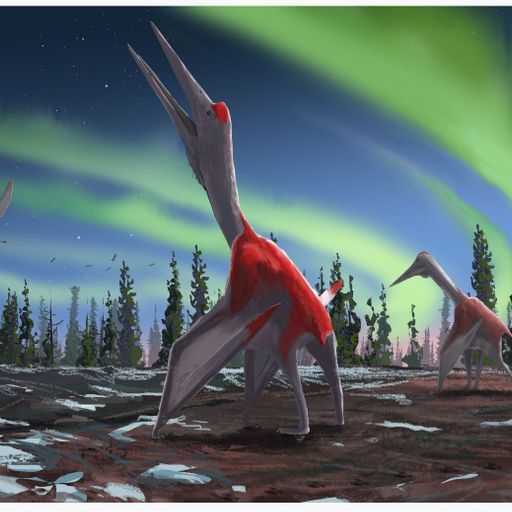A team of palaeontologists in the UK have discovered a new species of small pterosaur, similar in size to a turkey.
The dinosaur is unlike any other pterosaur discovered due to its long and slender toothless beak, similar to that of a kiwi bird, according to the study published in Cretaceous Research.
Scientists were surprised when they discovered the fossil and initially assumed it was part of the fin spine of a fish.
However, palaeontologists from Portsmouth and Bath universities realised the bone had an unusual texture, seen only in pterosaurs, and figured out it was indeed a piece of beak.
Professor David Martill, of the University of Portsmouth, said: “We’ve never seen anything like this little pterosaur before. The bizarre shape of the beak was so unique, at first the fossils weren’t recognised as a pterosaur.”
The fossil was found in Morocco and subsequent searches have revealed more fossils of the animal, which dates back to the late Cretaceous era.
Roy Smith, lead author of the project and a PhD student at Portsmouth, said: “Just imagine how delighted I was, while on field work in Morocco, to discover the lower jaw to match the upper jaw found by Dr Longrich of this utterly unique fossil animal.”
The new species, named Leptostomia begaaensis, is believed to have used its beak to probe into dirt and mud for hidden prey, hunting like present-day sandpipers or kiwis to find worms, crustaceans, and maybe even small hard-shelled clams.
Pterosaurs are the winged cousins to dinosaurs and over 100 species of the reptiles have been discovered, varying between the size of a fighter jet to as small as a sparrow.
Professor Martill said: “The diets and hunting strategies of pterosaurs were diverse – they likely ate meat, fish and insects. The giant 500-pound pterosaurs probably ate whatever they wanted.
“Some species hunted food on the wing, others stalked their prey on the ground. Now, the fragments of this remarkable little pterosaur show a lifestyle previously unknown for pterosaurs.”
Using a computerised tomography scan, the scientists were able to discover a network of internal canals within the beak for nerves that helped the pterosaur detect prey underground.
Dr Nick Longrich, from the Milner Centre for Evolution at the University of Bath, said: “Leptostomia may actually have been a fairly common pterosaur, but it’s so strange – people have probably been finding bits of this beast for years, but we didn’t know what they were until now.”
He added: “We’re underestimating pterosaur diversity because the fossil record gives us a biased picture.
“Pterosaur fossils typically preserve in watery settings – seas, lakes, and lagoons – because water carries sediments to bury bones,” Dr Longrich said.
“Pterosaurs flying over water to hunt for fish tend to fall in and die, so they’re common as fossils.
“Pterosaurs hunting along the margins of the water will preserve more rarely, and many from inland habitats may never preserve as fossils at all.
“There’s a similar pattern in birds. If all we had of birds was their fossils, we’d probably think that birds were mostly aquatic things like penguins, puffins, ducks and albatrosses.
“Even though they’re a minority of the species, their fossil record is a lot better than for land birds like hummingbirds, hawks, and ostriches,” Dr Longrich said.


